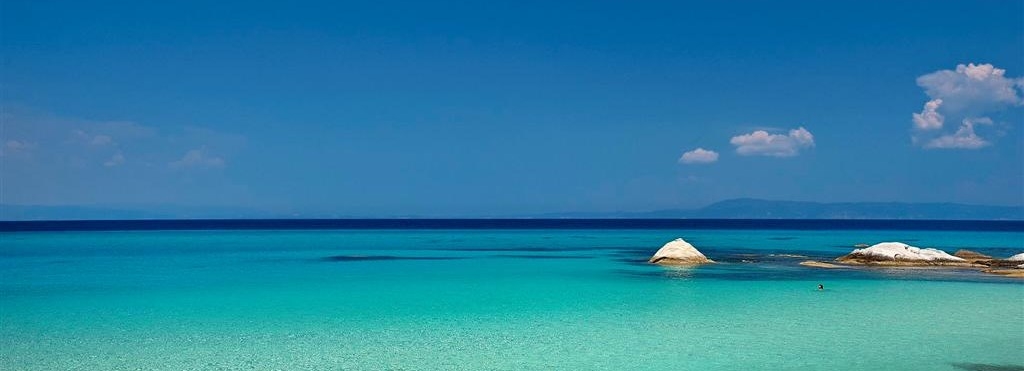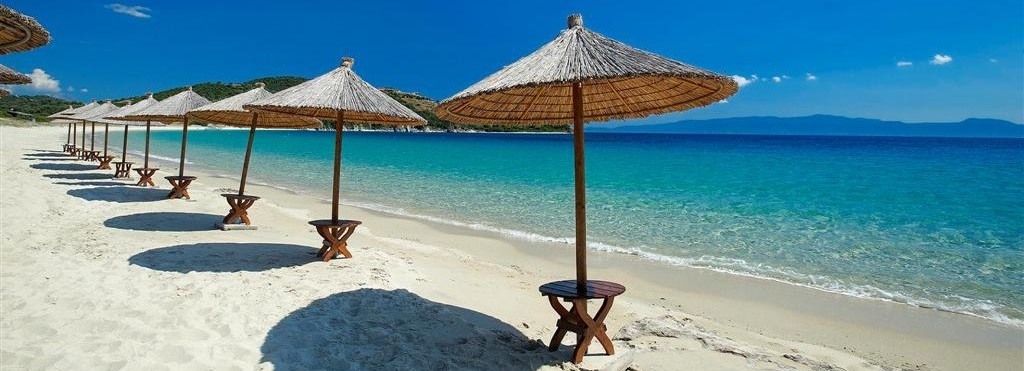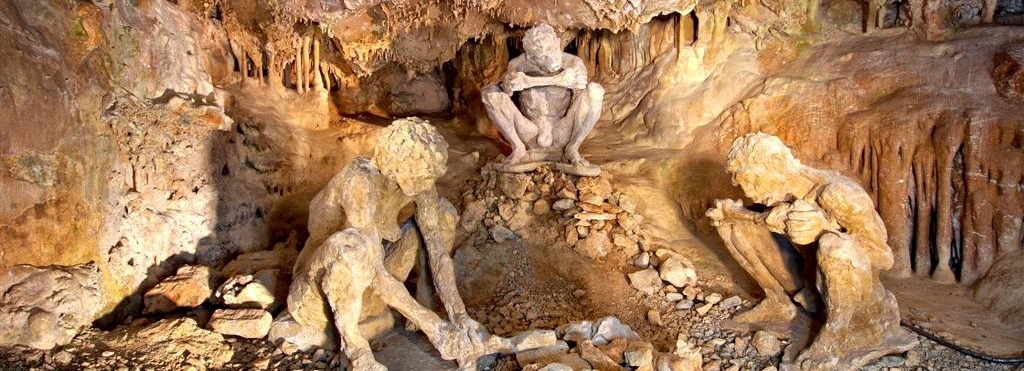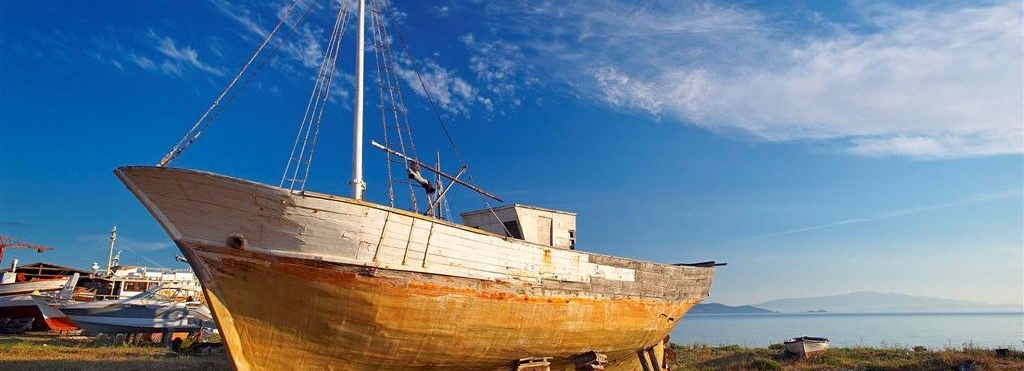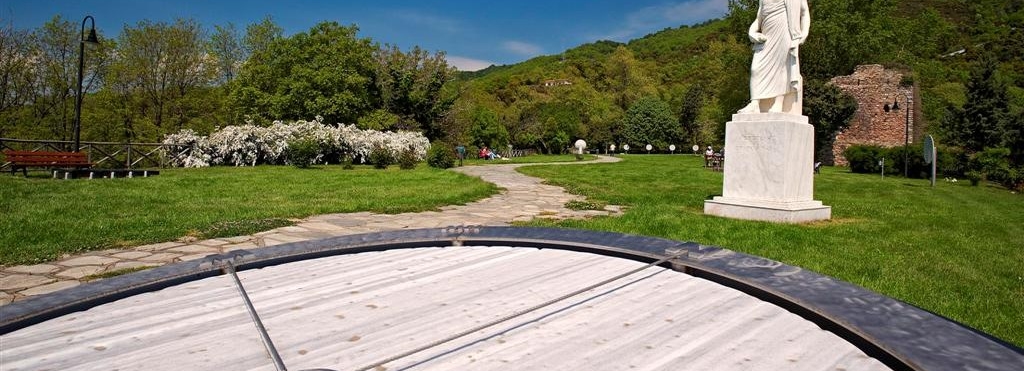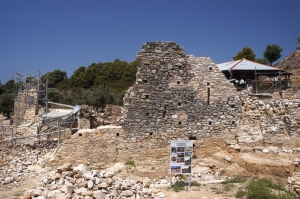Super User
Water Ski
The first form of water ski was aquaplaning, where the athlete ‘slides’ on the water, using a board, the aquaplane, tied behind a ‘speedboat’. Such activities were reported in the area of Volos in Greece as early as 1945-46 using Coastguard boats.
Diving
Man’s desire to explore the underwater world is as old as man himself. In Greece, a country whose coastline extends over 16.000km, daily life is directly related to the sea. Enclosed and ancient, the Mediterranean Sea with its steep rocky coasts, the great depths and crystal clear waters, hides inside a magical world, unknown to most! Entry to the wonderful world of aquatic life evokes respect and solidarity to the unique world of the Mediterranean Sea and inspires the young and old to become sensitized and mobilized with regard to issues relating to the healthy future of the aquatic environment.
Tristinika
A picturesque village located near a beautiful sandy beach. There are indications from findings which date the emergence of habitation in the 14th Century. Tradition has it that Tristinika used to be crossed by a river which supplied sufficient water to power a water-powered workshop for processing wool garments. Tristinika is a nickname and means small well; while others hold that the village was the grounds for a battle where the invaders were three times as many as the villagers-defenders and thus, for the defenders to win they each had to kill at least three enemies (in Greek treis=three and nika=win).
Ancient Potidaea
Ancient Potidaea was established in 600BC at the cervix of the peninsula of Palini. As follows from the name of the town, its patron was Poseidon. During Xerxes’ campaign against Greece in 480BC the town succumbed after a siege. A year later, however, it was reconstructed and held off the siege by Artabazus. In the same year it was the only city in Macedonia which participated, with other Greek cities, at the Battle of Plataea. In 349/8 BC the city succumbed to the fate of the other cities in Halkidiki and was annexed to the Kingdom of Macedonia.
After being deserted for almost 40 years, in 316BC Cassander erects in the place of Potidaea a new city named after him: Cassandreia (modern Greek Kassandreia). In the intervening interval until the conquest of Macedonia by the Romans (168BC), Cassandreia evolved into one of the mightiest cities in Macedonia. The opening of the canal is speculated to have occurred during this period, which facilitated navigation and promoted trade and economic progress. It fell to the Romans in 168BC and flourished once more.
The decline of the city is connected to the forays of the Huns who, in 540AD invaded Macedonia. Thus, despite the efforts by Justinian in the 14th century, the sources speak of its total desolation. Its castle, important for the security of the whole peninsula, was repaired by John VII Palaiologos in 1407, as well as by the Venetians later. In 1430 the city falls to the Turks. The old fortifications were repaired and reused in the Greek War of Independence in 1821, while the new opening of the canal is dated around the same period. It was in this castle that the revolutionists from Halkidiki barricaded themselves in 1821, putting up a fierce opposition before the “doom of Kassandra”, the well-known ‘holocaust’ that is remembered until today and commemorated with great solemnity annually on November 14. The wall was erected in the 7th century BC by the Corinthians, around the pre-existing city of “Pallene”, which due to its strategic location became powerful. It was the only city in Halkidiki which took part in the Battle of Plateaes and its name was recorded on the Bronze tripod dedicated by the victors to the Gods.
Castle Neposi, Protected by God
The Castle is located in the area of Neposi and was built in the 5th century AD in a location which was inhabited since at least the 2nd century BC. The findings of the survey of the surface of the castle are the following: At the top of a fortified hill, by nature and location inexpugnable, stands a castle, “the Small Castle”, as it is known to the people from Paleochora, which is the largest in Halkidiki. The only connection between this hill and the mountain is a narrow precipitous trail. It surrounded on three sides by water, the “sink of Paleochora”, the principal bayou of River Havrias, echoing plangent at the bottom of a 30-40 meter ravine and is enclosed by an especially beautiful landscape with wild vegetation. The castle occupies an area of 15 stremma (on level) and is encircled by a wall, roughly 800-1000 meters long and 4-5 meters high. There appear to be three building stages to the wall, distinguishable by their height and telling of the times the wall was rebuild after being run over.
Ancient Sermyli
This town is the oldest settlement in Halkidiki. In antiquity it was known by the name “Sermylia”, while in the Middle Ages it was called Ermylia. The area was first inhabited during the prehistoric era. Ancient Sermyli was located in the area now known as Platia Toumpa. Also in the area was ancient Kallipolis (today an archaeological site). Recently uncovered in the area was a coin dating from approximately 500BC. This area was a monastery dependency of the monastery of Dohiariou Monastery and one of the sights, the old wind mill, dates back to this era. The Church of St. George dates from 1818. During the Ottoman Rule, Ormylia was the landing site for an armed party of refugees from Macedonia, in 1854, designated by King Otto to start a general uprising. However this uprising was squashed by the Turks. This was also the landing site for the heads of the Cretan uprising (1866-1869), Leonidas Voulgaris and Captain Georgakis from Mademi, which also failed and was stanched by the Turks before it even begun. The Town Hall used to house the Primary School, erected in 1909 by an imperial monogram by Sultan Abdul Hamid and dated 1907.
The Sanctuary Of Zeus Ammon
One of the most significant temples located in Halkidiki is that of Zeus Ammon, which was unearthed in 1969, due to the erection of an hotel, where the foundations of this worship building suffered some damages. Excavations continued during the following years, 1970, 1971 and 1973, and established that founded in this area of the peninsula of Kassandra during the second half of the 8th century BC, by colonists from Euboea who had settled in the city of Afytis, was a sanctuary for Dionysus, who was worshiped with the Nymphs in a cave beneath the rock on the southwestern slope of the site. The worshiping in the case, reached by the devotees by means of chiseled stairs, continued in the coming centuries and lasted until the 2nd century AD.
Founded towards the end of the 5th century BC, on the level area at the northern part of the site was a sanctuary for deity Zeus Ammon, who originated from Egypt. Originally a built shrine was erected, but later on, in the second half of the 4th century BC built adjacent to it was a Peripteros (a kiosk temple) in Doric style with stone entablature. This was later, at the end of the 3rd-early 2nd century BC, replaced by another, a marble one, after the possible destruction suffered by the temple. Its roof was adorned by earthen tiles, in relief and in color. The restoration of its design has been made possible based on the architectural elements which have been located scattered around.
In the Roman Era (1st – 2nd centuries AD) the temple was retrofitted and its material was used to build two tiers at its southern narrow side, while between them, on top of the older shrine, another small shrine was constructed. The devotees must have sat in this open-air space as they heard some happenings. As testified by the findings, this roman phase of the sanctuary must have lasted until the era of the heirs of Constantine the Great, when it must have been finally and definitely demolished. Part of an early Christian bath unearthed at the northern end of the site may be possibly associated with the continuation of the worship in the early Christian era and perhaps even later, during the middle Byzantine period. The abandonment of the sanctuary was followed by the picking of its building materials by monks from the Russian monastery of Panteleimon, since the area had become a monastery dependency of said monastery.
Ancient Mende
Ancient Mende knew great economic prosperity due to the exports of the renowned wine of Mende and was one of the colonies established by Eretria on the peninsula of Pallni in the 8th century. The main archaeological site is 1200x600 meters and located on a flat and open place and on the slopes of a pine filled hill which smoothly descends to the sea. On its acropolis, of Vigla, which extends over the tallest southeastern point of the hill, underground tiled storage spaces were uncovered (clusters of storage-pits) which date from the 12th until the 7th century BC. On the plateau, known also as Xefoto (glade), a test section revealed part of the walls of the classical era city.
In the “Suburb”, also cited in Thucydides, which extends over the coastal area outside the walls of the ancient city, various consecutive settlement phases have been surveyed, from the 9th until the 4th century BC. In the coastal cemetery, found on the beach of Hotel Mendi, 241 burials were surveyed, principally of babies and children, inside large jars, which date from late 8th until early 6th century BC. The vessels were illustrated, with floral and geometrical decorations and/or incised and are characteristic samples of the pottery style of Halkidiki. Finally, the sanctuary of this ancient city was detected on the sandy, level cape “Poseidi”, 4km west of Mende. Amongst the excavated buildings we find the temple of Poseidon, daring from early 5th century BC and which was identified thanks to a series of inscriptions incised on vessels.
The results of the excavation research in ancient Mende until today are considered to be very significant, since they have established that a permanent settlement with intense Euboean influences had been established there already by the end of the 12th – early 11th century BC. We have yet to unravel the nature and characteristics of such an early settlement, but we have gathered important information not only on the colonization activities of Euboea, but also regarding the commercial relations which developed in the Northern Aegean Sea during the Greek Dark Ages.
Ancient Akanthos
Ancient Akanthos was a very distinguished city-port in eastern Halkidiki and one of the most important in all Macedonia. It holds a privileged spot in between two bays, that of Ierissos and on the road axis to Ouranoupoli – Holy Mt. of Athos. Akanthos, a colony of Andros according to Thucydides (IV 84.1) or of Andros and Chalkis according to Plutarch (Greek Questions 30), is developed around the middle of the 7th century BC on the place of a prehistoric settlement. The city is known from the wide circulation of its coinage in antiquity. Farming must have been the main source of wealth for the city. Historically, Akanthos, makes its first appearance during the Persian Wars, when it sided with the Persians, initially in 490 on the side of Mardonius and then, in 480BC, alongside Xerxes, whom it helped with the construction of the canal in the peninsula. It later became a member of the Delian League and helped the Athenians in the Peloponnesian War. After the Peace of Nicias in 421BC Akanthos enjoyed of a brief period of independence until the propagation of the Macedonians and was finally placed under their control in the 4th century BC. The city was looted by the Romans around 200BC (Livy, 31.45.15 ff.), however its port kept operating. In the imperial era the city became a roman region (conventus for roman citizens). Silver coinage were first minted in Akanthos around 530BC in great quantities, following the standards of Euboea. A change in coin minting in Akanthos is observed around 424BC, when Phoenician standards were adopted. The last coins of the mint of Akanthos may be dated around the middle of the 4th century BC.
Monastery Of Zygos
The Monastery of Zygos (Frankish castle) is located just outside of Holy Mount Athos. It is a Byzantine monastery belonged to Mt Athos and was established in the middle of the tenth century, while it was destroyed just before 1198. All of its fortified courtyard survives, reinforced with ten towers, which surrounds an area of 5.5 stremma. The Catholicon, a building dating back to the first quarter of the 11th century, survives up to a height of 4 meters. It is a church in the cross-in-square style with two burial chapels and evident are four building phases. The 10th Ephorate of Byzantine Antiquities performs a systematic excavation aimed to bring to light and study the building history of the middle-Byzantine monastery of Zygos, as mentions Archaeologist Ioakeim Ath. Papaggelos.
